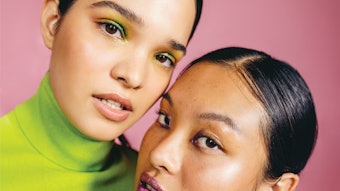
Read the full article in the September 2022 digital magazine.
Synthetic pigments such as titanium dioxide, iron oxides and organic lakes represent some of the most widely used cosmetic color additives today. Growing concerns over environmental issues associated with industrial pigment production, however, are motivating the development of greener, more sustainable processes to produce these colorants as well as the search for minimally processed, naturally derived options.
It is important to note that a color additive listed for use in food or drugs is not necessarily approved for cosmetics; there must be a separate listing for use in cosmetics.
Color additives for cosmetics and personal care products are regulated in every country. Although recently, much research has been carried out to develop naturally derived options, only a limited number have been approved for cosmetics.1, 2 The U.S. Food and Drug Administration (FDA) currently has the most restrictive regulations for color additives, with only 59 (23 exempt and 36 certifiable) approved for cosmetics and personal care applications; this compares with the European Union at 153, and China at 156.
The list of colors permitted for cosmetics in the United States can be found in the CFR Title 21 Part 73 for exempt colors, and Part 74 covers certifiable colors with lakes addressed in Part 82. Color additive lists for the EU and China can be found in the Regulation EC 1223/2009 Annex IV, the Safety and Technical Standards for Cosmetics (2015 version) Annex 6, respectively.
This two-part series will explore the current regulatory environment for color additives in the U.S. and global cosmetic markets. It will also examine the unique chemistry of naturally derived colors. Part I begins with those approved in the United States, as this region has a strict system and shortest list of approved colors.
U.S. Color Additive Regulations
All color additives used in cosmetics, or any other FDA-regulated product for that matter, sold in the United States must be approved by the FDA. A color additive, as described in 21 CFR Part 70.3 (f) and (g), is any dye, pigment or other substance that can impart color (alone or through reaction with another substance) to a food, drug or cosmetic, or to the human body. The term color also includes black, white and intermediate greys.
According to the FDA definition, a chemical such as dihydroxyacetone (DHA), used in sunless tanning products, that reacts with proteins in the skin to form color is also a color additive. In addition, a drug ingested with the intended function of imparting color to the human body, such as a tanning pill, would also be considered a color additive.3
Each color additive has a unique listing in the FDA regulations that states its identity. This can include the source of the color additive or its raw material feedstocks, chemical and physical specifications, and restrictions. Some color additives also must be certified by FDA, meaning they must be tested by FDA laboratories and meet the requirements for identity and specifications set forth in the regulations.
It does not matter where the color additive or finished cosmetic is manufactured, if it is sold into the United States, its colorants must conform to these regulations. It is important to note that a color additive listed for use in food or drugs is not necessarily approved for cosmetics; there must be a separate listing for use in cosmetics. ...
Continue reading in the September 2022 digital magazine.
References
- Yang, D., Park, S.Y. and Lee, S.Y. (2021). Production of rainbow colorants by metabolically engineered Escherichia coli. Advanced Science 8(13), 2100743.
- Zha, J., Wu, X. and Koffas, M.A. (2020). Making brilliant colors by microorganisms. Current Opinion in Biotechnology 61 135-141.
- US FDA (accessed 2022, Apr 3). Tanning pills. Available at https://www.fda.gov/cosmetics/cosmetic-products/tanning-pills
...continue reading











